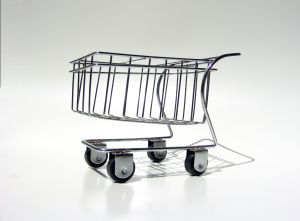 Nearly three out of four British consumers avoid companies that regularly have technical problems. That data comes from research by Delphix, a data virtualization company. In fact, ongoing technical problems will motivate 42% of British consumers to switch their business to a different company and another 40% will consider moving their business to another company.
Nearly three out of four British consumers avoid companies that regularly have technical problems. That data comes from research by Delphix, a data virtualization company. In fact, ongoing technical problems will motivate 42% of British consumers to switch their business to a different company and another 40% will consider moving their business to another company.
Not only do British consumers have little tolerance for technical problems, they also have high expectations for the type of technology that companies provide in consumer transactions and interactions. Nearly three out of four British consumers expect companies to use the latest technology in customer interactions.
This expectation is particularly high among banking customers. Nearly four out of five British consumers expect banks to use the latest technology in customer interactions. Furthermore, one in four banking customers believe that online banking or payment processes should never have a technical problem. That doesn’t mean the other three out of four banking customers will accept technical problems. The other three in four banking customers will only accept a technical problem once per 10 month period.
Outdated technology also motivates British consumers to move their business to a different company. The Delphix survey found that 49% of British consumers will switch their business to a different company if technical updates are not made in a timely manner.
User Experience as a Strategic Imperative
Bottom-line, user experience in all digital interactions must be a top priority, because a negative user experience has a direct effect on sales and profits. Nearly one in two consumers will switch from your company to a competitor if they experience technical problems when trying to complete a transaction or another activity. There is no room for failure. Not only do you need to ensure there are no problems, but you also need to use the most current technology possible. The research data shows that outdated technology delivers a user experience which doesn’t meet consumer expectations. As a result, your brand image suffers, and ultimately, you lose sales and profits.
With the increase in mobile shopping and brand communications—where consumers are quick to update to the latest devices with all of the latest capabilities—it’s even more important to keep up with evolving technology. Consumers know what capabilities are available, and they expect your brand to offer them in all consumer touch points.
Of course, the danger is adding all of the technical bells and whistles possible, which ends up negatively affecting the user experience. Visit the Disney website and try to book a dinner reservation or reserve passes for attractions and you’ll see what I mean. It looks nice but the site is extremely frustrating to consumers when you actually want to do something. With that in mind, be very careful to exercise restraint. The best user experience doesn’t need to have every bell and whistle available. Simple design can be far more effective in terms of meeting consumer expectations based on their transactional needs.
How do you prioritize user experience so your customers maintain a positive perception of your brand and remain loyal? Leave a comment and share your thoughts on the prioritization of user experience in 2014.
Image: Kip Curry
Susan Gunelius is the author of 10 marketing, social media, branding, copywriting, and technology books, and she is President & CEO of KeySplash Creative, Inc., a marketing communications company. She also owns Women on Business, an award-wining blog for business women. She is a featured columnist for Entrepreneur.com and Forbes.com, and her marketing-related articles have appeared on websites such as MSNBC.com, BusinessWeek.com, TodayShow.com, and more.
She has over 20 years of experience in the marketing field having spent the first decade of her career directing marketing programs for some of the largest companies in the world, including divisions of AT&T and HSBC. Today, her clients include large and small companies around the world and household brands like Citigroup, Cox Communications, Intuit, and more. Susan is frequently interviewed about marketing and branding by television, radio, print, and online media organizations, and she speaks about these topics at events around the world. You can connect with her on Twitter, Facebook, LinkedIn, or Google+.


